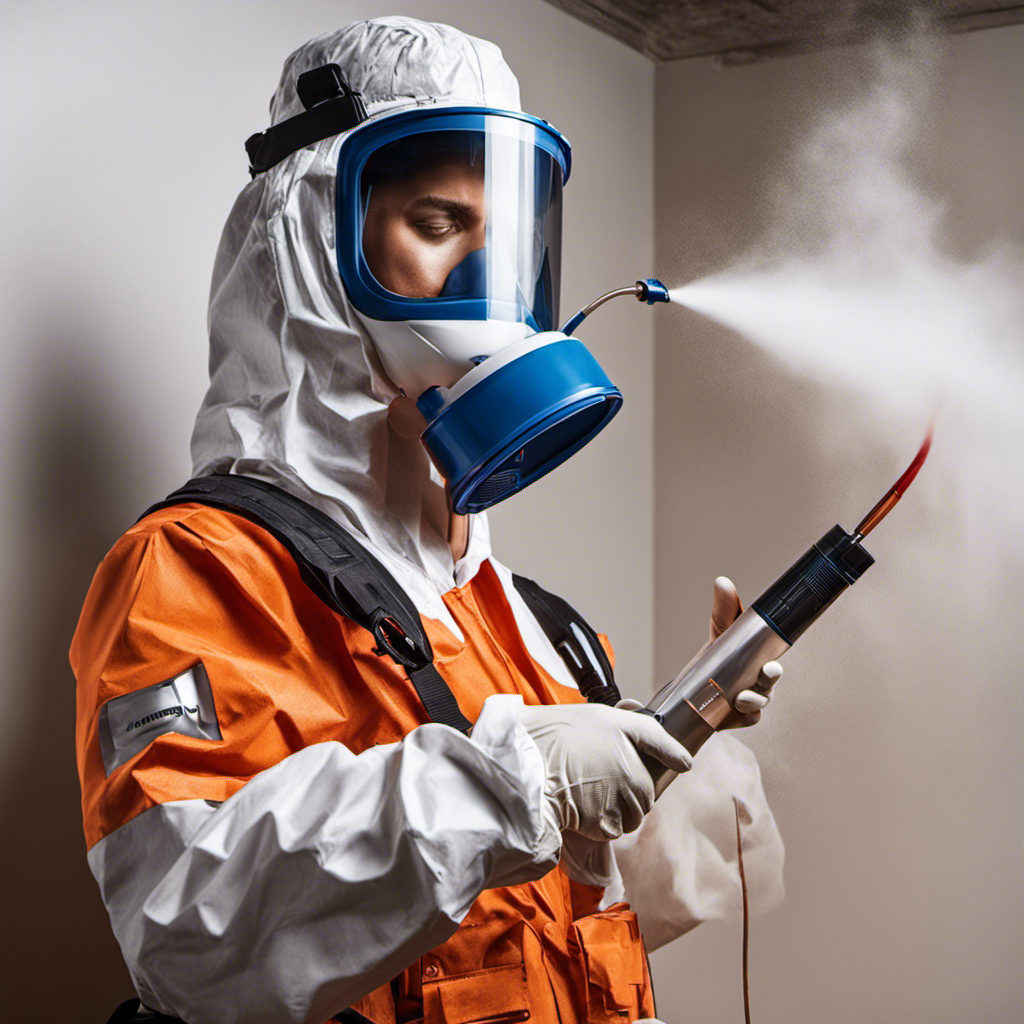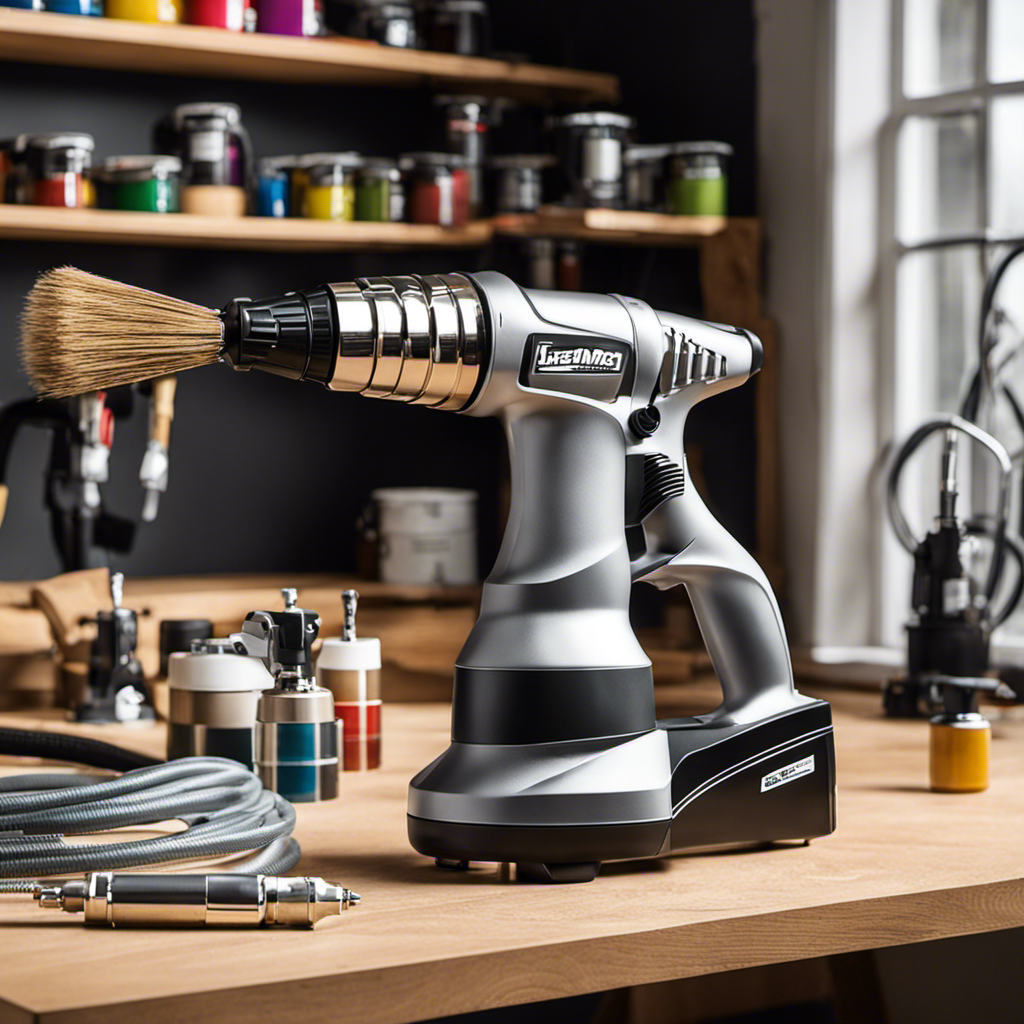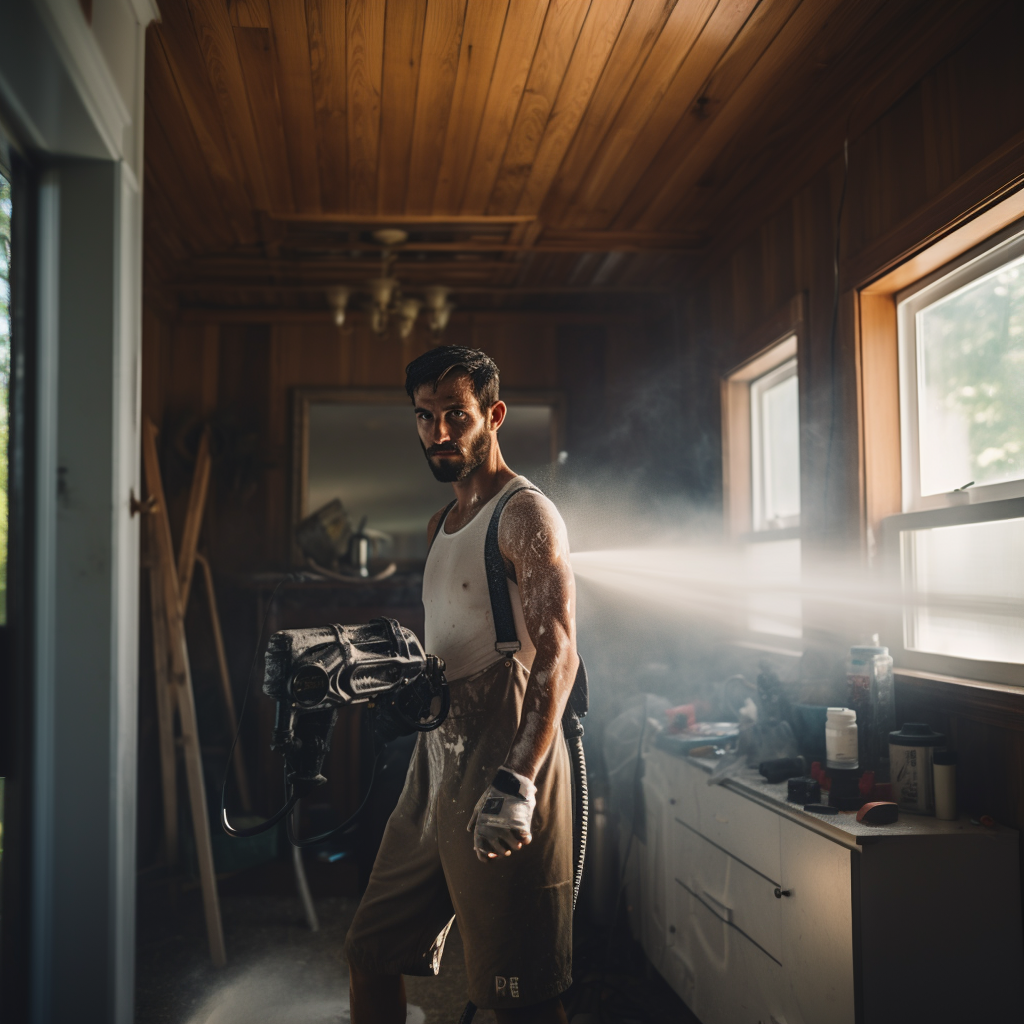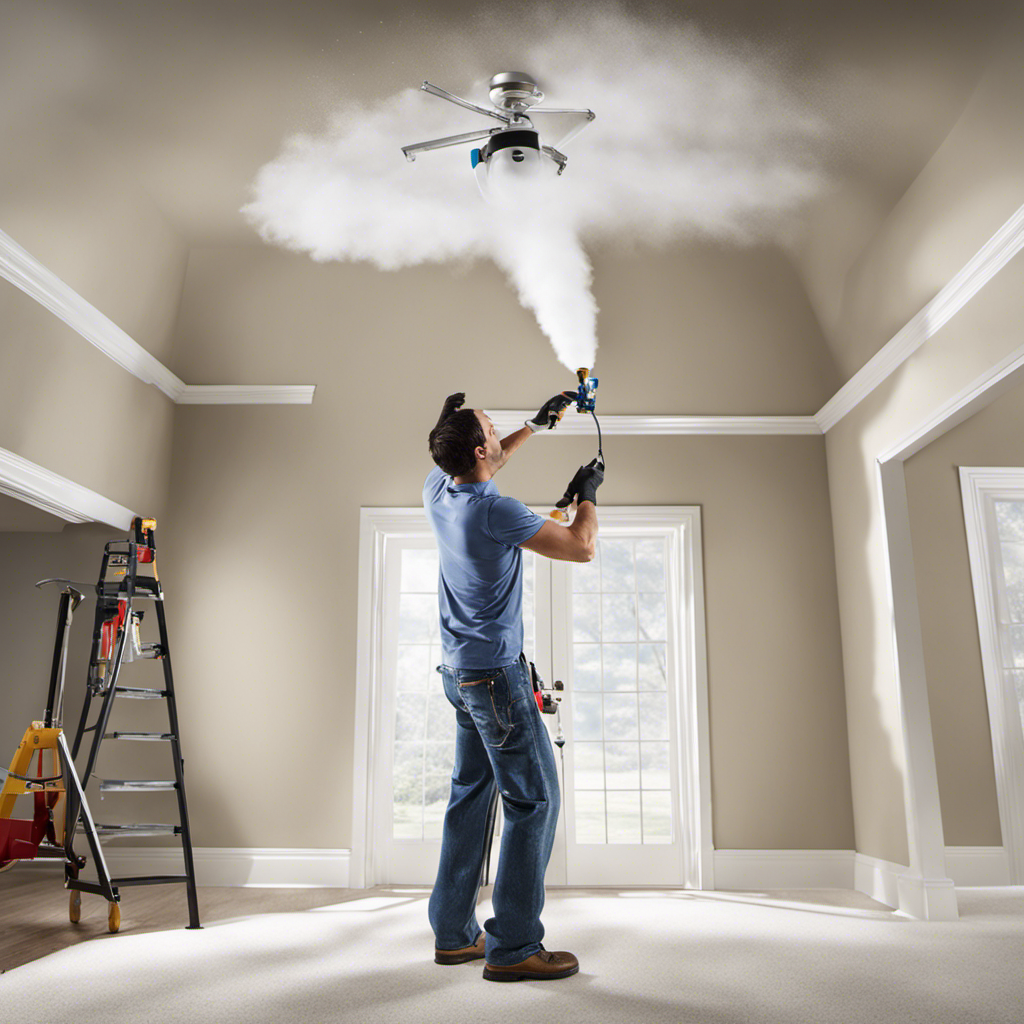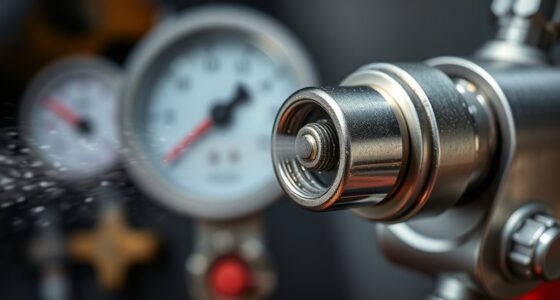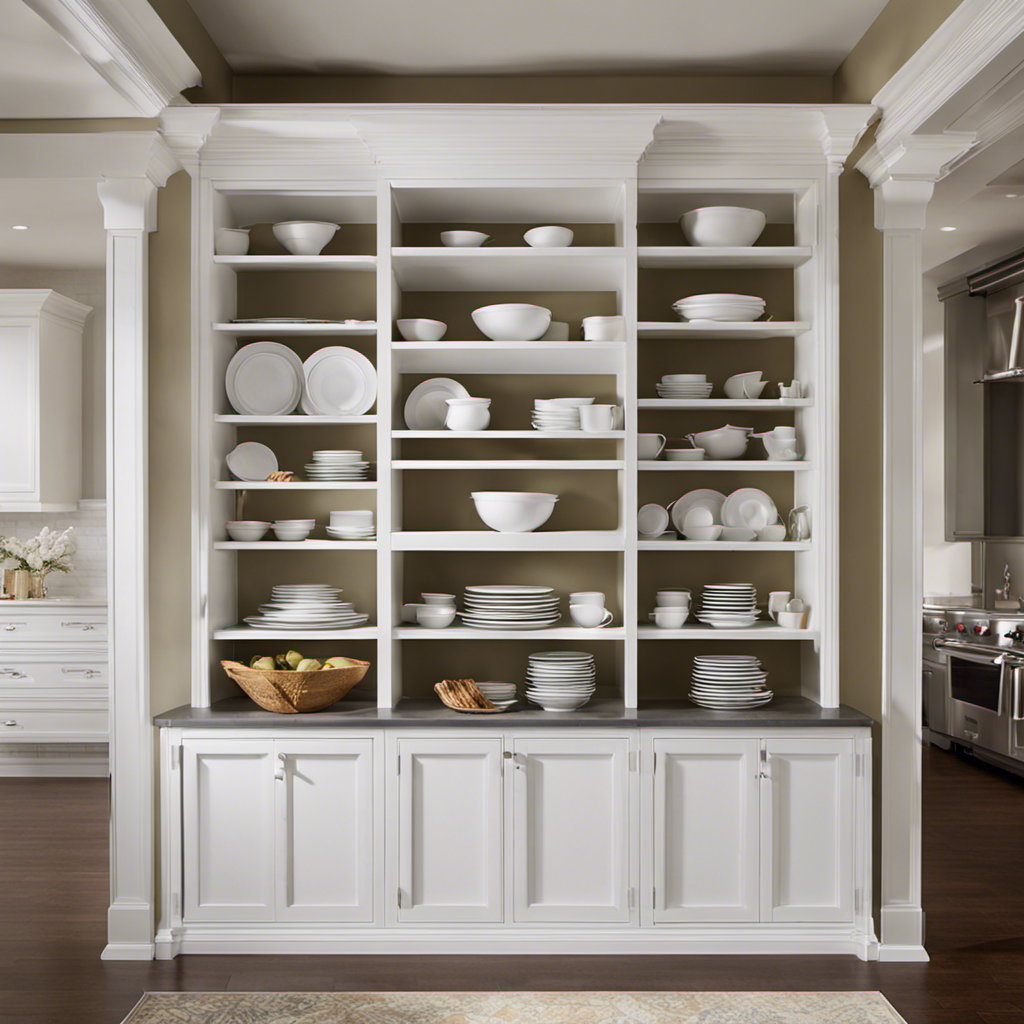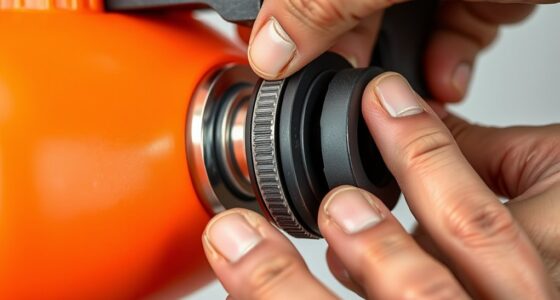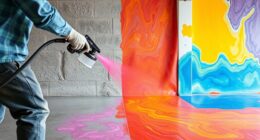Becoming proficient in operating airless paint sprayers demands extensive knowledge and adept execution of multiple techniques and processes. These tools, utilizing a high-pressure stream for paint application, provide quick and uniform coverage, resulting in a flawless finish.
But success lies not only in the sprayer itself, but also in the surface preparation, technique, and maintenance.
In this article, readers will delve into the world of airless paint sprayers, learning the secrets to achieving flawless results.
Key Takeaways
- Understanding the basics of airless paint sprayers is essential for effortless and efficient painting.
- Proper surface preparation, including cleaning, filling cracks, and priming, is crucial for a smooth and long-lasting finish.
- Mastering the technique of spraying, including holding the sprayer correctly, maintaining speed and distance, and using the correct hand position, ensures professional results.
- Regular cleaning and maintenance, such as flushing the system, lubricating components, and regularly cleaning with a solution, are necessary to prevent clogs and ensure smooth operation.
Understanding the Basics of Airless Paint Sprayers
Understanding the basics of airless paint sprayers is crucial for anyone looking to master the art of using this efficient and effective painting tool.
When using an airless paint sprayer, it is important to choose the right paint for the job. Water-based paints are commonly used with airless sprayers due to their ease of use and quick drying time. Oil-based paints can also be used, but they require more cleanup and can take longer to dry.
Avoid common mistakes when using airless sprayers, such as applying too much paint in one coat or spraying too close to the surface, which can result in drips and an uneven finish.
It is also important to properly clean and maintain the sprayer to prevent clogs and ensure optimal performance.
Preparing Your Surface for Airless Painting
Before using an airless paint sprayer, it’s important to properly prepare the surface. This involves removing loose paint, dirt, and debris, as well as filling in any cracks or holes. Here are the best practices for surface cleaning:
-
Start by thoroughly cleaning the surface using a power washer or scraper. This will remove any loose paint, dirt, or debris and create a clean canvas for the paint to adhere to.
-
After cleaning, inspect the surface for any cracks or holes. Fill them in with a suitable filler to create a uniform and level surface.
-
Consider using a primer before applying the paint. Priming the surface enhances adhesion and provides a uniform base for the topcoat. This will result in a more professional finish.
-
Finally, make sure to properly protect surrounding areas. Use drop cloths or masking tape to prevent any unwanted paint splatters or spills.
Following these best practices for surface cleaning will ensure that your airless paint sprayer can perform at its best and result in a flawless paint job.
Mastering the Technique of Airless Spraying
To achieve professional results and prevent clogs, maintaining a consistent speed and distance from the surface is crucial when using an airless paint sprayer. Proper hand position is also important for stability and control. By keeping the wrist straight and the arm relaxed, fatigue can be avoided during long painting sessions. The following table provides a breakdown of the proper hand position and the corresponding benefits:
| Hand Position | Benefits |
|---|---|
| Grip the spray gun | Increased control and stability |
| Place index finger | Accurate trigger control |
| Rest other fingers | Reduced strain and fatigue |
| Keep wrist straight | Enhanced comfort and precision |
| Maintain relaxed arm | Consistent speed and smooth coverage |
Cleaning and Maintenance Tips for Airless Paint Sprayers
Regular maintenance and cleaning are essential for keeping airless paint sprayers in optimal working condition. Here are some important tips to prevent paint sprayer clogs:
-
Flush the system after each use: This helps remove any residual paint or debris that could potentially clog the sprayer.
-
Lubricate pump and components: Regularly applying lubricant to the pump and other moving parts ensures smooth operation and extends the lifespan of the sprayer.
-
Thoroughly clean the system: Flushing the sprayer with a cleaning solution helps remove any built-up paint or contaminants that may cause clogs.
-
Regularly lubricate pump rod and piston: By lubricating these parts, you can minimize friction and reduce the chances of clogs.
Incorporate these maintenance practices into your routine to keep your airless paint sprayer in excellent condition and avoid frustrating clogs that can disrupt your painting projects.
Safety and Troubleshooting: A Guide for Airless Paint Sprayer Users
Wearing a respirator is crucial for painters using an airless paint sprayer to protect against harmful paint particles and fumes. To ensure safety and achieve professional results, it is important to understand how to prevent paint overspray and troubleshoot uneven coverage. Paint overspray occurs when the spray pattern is wider than the intended surface, resulting in wasted paint and a messy finish. To prevent this, painters can adjust the pressure settings on the sprayer and hold the nozzle at the correct distance from the surface. Troubleshooting uneven coverage requires identifying the cause, such as a clogged nozzle or incorrect spray technique. Regular maintenance, such as cleaning the sprayer and checking for clogs, can also help prevent these issues.
| Preventing Paint Overspray | Troubleshooting Uneven Coverage |
|---|---|
| Adjust pressure settings | Check for clogged nozzle |
| Hold nozzle at correct distance | Correct spray technique |
| Use spray shields or tape off areas | Check for paint buildup |
| Practice proper spray technique | Check for worn or damaged parts |
Frequently Asked Questions
What Types of Surfaces Can Be Painted Using an Airless Paint Sprayer?
Interior walls and furniture can be effectively painted using an airless paint sprayer. The high-pressure stream of paint produced by the sprayer ensures even coverage and a smooth finish on these surfaces.
With the ability to adjust nozzle size and pressure settings, the sprayer can accommodate different projects and provide optimal results. Whether it’s a large wall or a piece of furniture, an airless paint sprayer is a versatile tool that can deliver professional-quality painting.
Can an Airless Paint Sprayer Be Used for Detailed or Intricate Work?
Yes, an airless paint sprayer can be used for detailed or intricate work. By using specific airless paint sprayer techniques, such as adjusting the nozzle size and pressure settings, painters can achieve precise and controlled application on small surfaces or intricate designs.
The benefits of using an airless paint sprayer for detailed work include faster coverage, smoother finish, and the ability to reach tight corners and edges with ease. This makes it an excellent tool for professional painters and DIY enthusiasts alike.
Are Airless Paint Sprayers Suitable for Outdoor Painting Projects?
Airless paint sprayers are highly suitable for outdoor painting projects. They offer numerous benefits, especially for large-scale projects. With their high-pressure stream of paint, they provide even coverage and a smooth finish, making them ideal for painting large surfaces.
Additionally, their adjustable nozzle size and pressure settings allow for versatility in tackling different outdoor projects. The efficiency and effortless application of airless paint sprayers make them a valuable tool for achieving professional results in outdoor painting endeavors.
How Long Does It Take for the Paint to Dry When Using an Airless Paint Sprayer?
When using an airless paint sprayer, the drying time of the paint depends on various factors. These factors include the type of paint used, the environmental conditions, and the thickness of the paint application.
Generally, airless paint sprayers provide a thin and even layer of paint. This thin layer allows for faster drying compared to traditional methods. However, it is important to follow the manufacturer’s instructions for the specific paint being used. These instructions will provide guidance on the appropriate drying time.
It is crucial to allow adequate drying time before applying additional coats or handling the painted surface. Rushing the drying process can result in uneven drying, which can affect the overall finish and durability of the paint job. So, be patient and give the paint enough time to dry properly.
Are There Any Safety Precautions to Take When Using an Airless Paint Sprayer Indoors?
When using an airless paint sprayer indoors, there are important safety precautions to consider.
To minimize the risk of paint overspray, it is essential to properly protect the surrounding area with drop cloths or plastic sheets.
Adequate ventilation is crucial, so ensure windows and doors are open to allow fresh air to circulate.
It is also recommended to wear protective goggles, gloves, and a respirator to safeguard against paint particles and fumes.
Following these precautions will help create a safer environment when using an airless paint sprayer indoors.
Conclusion
In conclusion, mastering the art of airless paint sprayers requires a solid understanding of the basics, precise surface preparation, and a mastery of spraying techniques.
Regular cleaning and maintenance are crucial to prevent clogs and ensure smooth operation.
Safety measures should never be overlooked, as they protect both the user and the surrounding environment.
So, are you ready to take your painting skills to the next level?
With dedication and practice, you can become a master of airless paint sprayers and achieve professional-quality results.
Franz came aboard the Paint Sprayer Zone team with a background in both journalism and home renovation. His articulate writing style, combined with a passion for DIY projects, makes him an invaluable asset. Franz has a knack for breaking down technical jargon into easy-to-understand content, ensuring that even the most novice of readers can grasp the complexities of paint sprayers.
